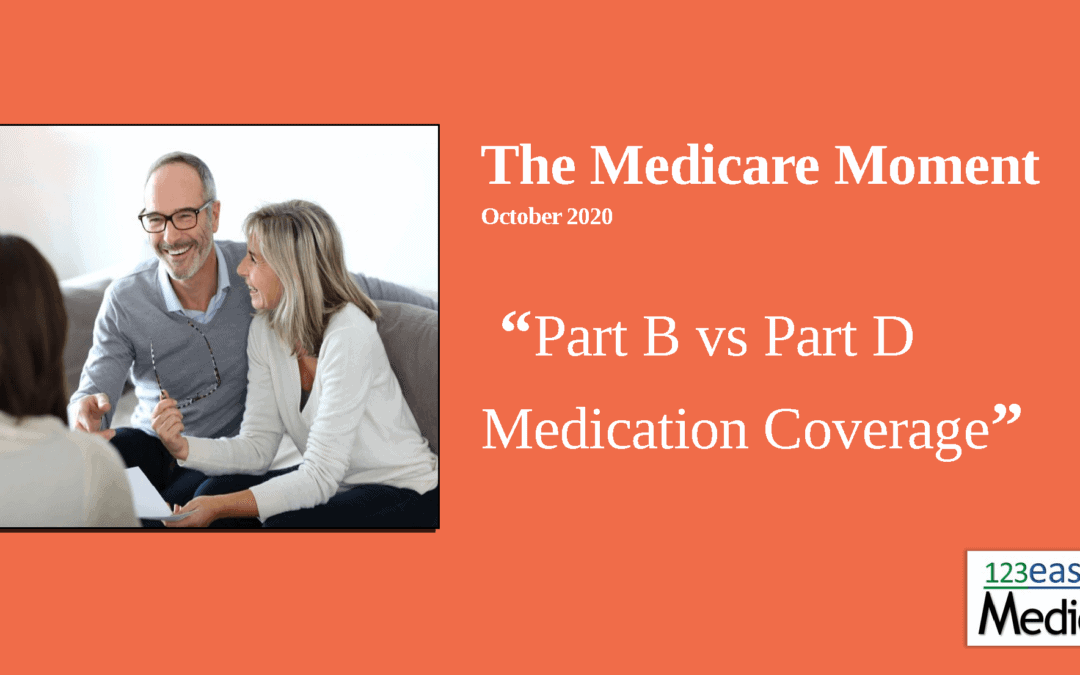If you’ve looked at your plan’s drug formulary lately, it’s likely that you’ve seen some codes like PA, QL, ST, and B vs. D next to medications in the list. When you see B vs. D, that means that the medication may be covered under Part B (Medical Services) instead of Part D (Prescription Drug Plan) – either all of the time or some of the time, depending on the situation. It’s confusing, not only to you but also to your pharmacist – sometimes YOU have to tell THEM how to process the claim. In order to do that, you must understand what is covered under Part B vs. Part D.
Nebulizer solutions, blood glucose monitors and test strips, lancet devices, lancets, insulin pump supplies, AND insulin used in the insulin pump are all covered under Part B. However, syringes, insulin pen needles, and inhaled insulin devices are covered under Part D. Confusing…. I know. It gets more convoluted the further down the rabbit hole we go. What about injectable osteoporosis drugs like Prolia or other injectable or infused medications? Well, if it’s administered under medical supervision, it’s covered by Part B. If you inject yourself, however, it’s covered under Part D. But, if you give yourself blood clotting factor injections for hemophilia, that’s covered by Part B. My head is spinning just typing this article.
Oral medications like transplant/immunosuppressive drugs (if Medicare paid for your transplant) and some oral cancer drugs are covered by Part B. If you take oral anti-nausea medication as part of an anti-cancer chemotherapy regimen, it is paid for by Part B as long as they’re administered within 48 hours of chemotherapy or are used as a full replacement for an IV anti-nausea drug, but if prescribed for nausea due to other conditions, they are covered by Part D.
What about natural or compounded medications like Nature-Throid, Westhroid, or Armour Thyroid? Generally speaking, and with few exceptions, these are not covered by any part of Medicare which means you will need to pay cash for those. Grab yourself a prescription discount card like GoodRx to help lower the cost.
If you have a Medicare Advantage plan and the medication is covered by Part B, you’ll pay 20% co-insurance (in most cases). If you have Medicare + Medigap, Medicare Part B will pay and then your Medigap plan will pay the 20% (consult your specific Medigap plan for details on Part B coinsurance coverage). For that to happen, you must give your pharmacist all of your cards – Medicare, Medigap, and also your Part D.
If in doubt and you think your pharmacy is not processing the claim correctly, put the prescription on hold, give us a call at 602-281-3898 and let us guide you – that’s what we’re here for.

